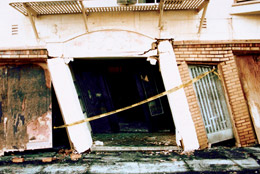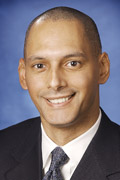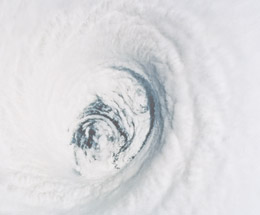 |
 |
 |
Help for CATS Reinsurance intermediary teams up with the Chicago Mercentile Exchange to offer hurricane futures By Michael J. Moody, MBA, ARM In general, the insurance industry has a well-established core competence. It is there to accept risks, collect a premium and then pay claims, should a loss occur. And for the most part, the insurance mechanism performs quite well. Except, that is, until the insurance marketplace experiences the occasional, large catastrophic loss. Events over the past three or four years have clearly shown that one such cat event is hurricane. And these typically cause a major financial distress in the insurance industry. Historically, hurricanes, and to a lesser extent earthquakes, have created financial problems for a number of insurers/reinsures. After Hurricane Katrina, many industry observers began to consider possible solutions to this problem. One of the persons working on the problem was Felix Carabello, director of alternative investment products for the Chicago Mercantile Exchange (CME). The CME is the largest and most diverse financial exchange in the world, and Carabello had already been working to provide a successful exchange for weather derivatives. After 2005, he realized that they must do something. “Hurricanes will continue to be an industry problem, and we should be able to solve it,” he pointed out. Thinking outside the box Since that time, Carabello has been working with Carvill, a leading independent reinsurance intermediary, to develop a viable solution to the catastrophic exposures associated with hurricanes. The CME just launched its hurricane futures and options. As such, the products will be available for the 2007 hurricane season. Both CME and Carvill saw this as an opportunity for the capital markets to help the insurance industry “weather the storm” that is typically associated with hurricanes. Carvill had been reviewing possible alternatives for their clients for a couple of years and had even gone so far as to develop a specific index for use with hurricanes, says Dr. Steve Smith, senior vice president at ReAdvisory, Carvill’s analytical arm. Smith notes that not only were the losses themselves difficult for the industry to deal with, but the “broader impact from both the cat modelers and the rating agencies resulted in further stress on available capital.” While it is clear that the reinsurance market will be the primary user of these hurricane products, several other groups also should be mentioned. One other group that should be interested is the energy industry. Currently they are the most prolific users of weather derivatives. In fact, the entire weather derivative market has grown up around the deregulation of the energy industry. As a result, they should be a major user of hurricane instruments. Another group of potential prospects for the hurricane derivatives is captive insurance companies. Smith notes that his firm has a relationship with several large captives and believes that they may be an excellent fit for the hurricane products. Carabello also sees captives as potential users of hurricane derivatives. He notes that today, “corporations are becoming much more sophisticated about handling their risks, as well as how they use their captives.” He says, “Corporations are working hard to optimize their shareholders’ value,” and he notes that the hurricane options may help in that effort. Carvill’s hurricane index Most of us have grown up with the Saffir-Simpson Hurricane Scale, which classifies hurricanes in ranges from 1 to 5; however, the measurement is not too precise. At this point, there is still some question about what the actual rating was for Hurricane Katrina. The result is that the Saffir-Simpson measurement is not suitable for an exchange-traded derivative. Accordingly, Carvill set about establishing a new measurement and, over the course of time, developed the Carvill Hurricane Index (CHI). For the most part, Carabello notes, the index is dependent on only two variables: wind speed and radius of the storm. He also notes that the key to this information is that it is widely available and completely verifiable from data provided by the National Hurricane Center of the National Weather Service. But it’s this simple, easily understandable calculation that is the keystone to the index. It is critically important since it allows for a timely resolution of open accounts. And time is of the essence here, Carabello points out, “since the contract is closed two days after the hurricane makes landfall.” At that point he says, “All contracts are settled up and money is exchanged.” Such is the beauty of derivative contracts. If there is a loss and an organization has a contract, payment is based purely on the facts of the event. If the contract was in effect and the Index measured the size of the loss, payment is made. No proof of loss to complete, and no waiting for long periods while the claim is “settled.” Currently the hurricane derivatives are limited to the Atlantic coast and Gulf coast, which is divided into to five overlapping regions: Northern Atlantic Coast, Southern Atlantic Coast, Florida, Gulf Coast and Eastern United States. The CHI would then be calculated by using the maximum wind velocity and the radius of each official storm to determine the potential for damage. An example of how this may work in practice can be seen in viewing both Hurricanes Katrina and Rita. Hurricane Wilma was the strongest storm on record (with a central pressure of 882mb) at one point in its life. However, the CHI highlights that at its strongest, Hurricane Katrina had more potential for damage than Wilma, despite its lower wind speed, since Katrina was a far wider storm. The Saffir-Simpson scale, according to Smith, “would have been unable to make this distinction clear.” One reality is that the insurance industry needs to find a way to better handle its catastrophic losses. And yet another reality, according to Smith, is, “The capital markets want to find a way to come into the insurance business.” Carabello also notes, “There is a lot of capital in the hedge fund industry, and they want exposures to the new types of financial instruments, like hurricane derivatives.” Bottom line Carabello has said that some people have questioned the rational of these products. They say, “Aren’t you just gambling on a hurricane?” He indicates that the risk of hurricane damage is already here, and we just need a way to shift the risk to entities that are in the best position to handle it (i.e., the capital market). “Hurricanes will continue to be a problem, and we should be able to help fix it now.” Smith adds that it is extremely important to get the mechanism in place right now, “because if you believe in the whole climate change issue, this will continue to be a more and more difficult problem for the insurance industry in the future.” Smith goes on to note, “Even though it did not happen last year, it could have.” And he says, “It’s not that it is never going to happen, because it will happen.” Further, he points out, “As an industry, we have to be prepared for this, and we will have to have access to capital once it occurs.” From Carvill’s standpoint, they hope that the insurance industry will embrace the concept because, Smith concludes, “it can provide us with a source of a massive amount of liquid capital at a moment’s notice.” * |
|
||||||||||||||||||||||||
|
|||||||||||||||||||||||||



